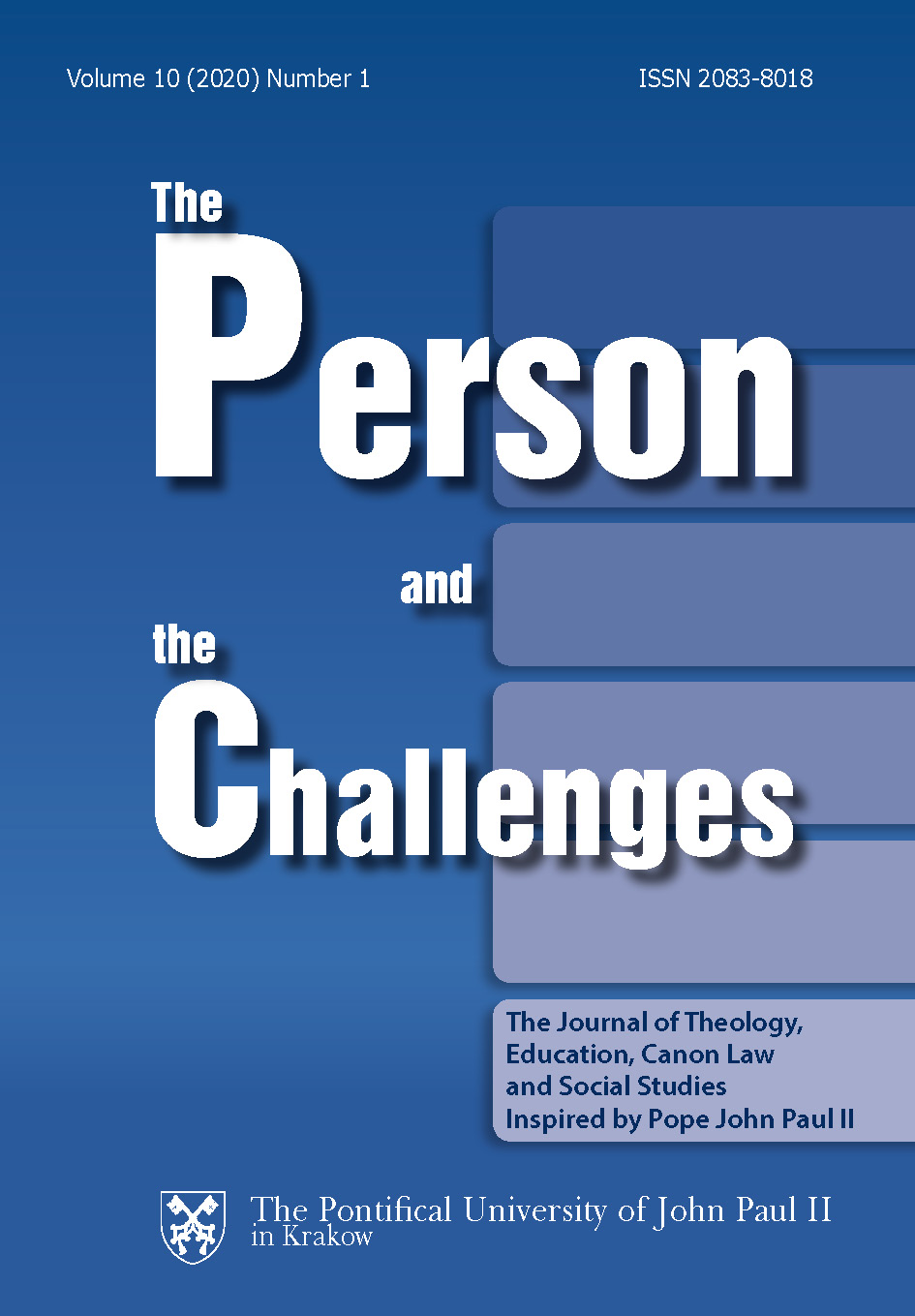Neurobiological and Relational Bases for Understanding Aggressiveness
DOI:
https://doi.org/10.15633/pch.3615Słowa kluczowe:
Aggression, neurobiology, relational paradigm, emotional regulationAbstrakt
Aggression is a deliberate, proactive or impulsive, defensive or active act, expressed through the use of physical power or psychological pressure. As such, it is a significant element of violent behaviour. According to developmental stages, aggression is expressed in various forms and is associated with the specific ways of regulating the feelings of shame and anger. We assume that excessive exposure and interrupted contact in development can lead to a specific regulation of the affects of shame and anger in a person who, because he feels threatened, can transform these feelings into aggressive behaviour. In addition, the dysregulated affects can lead to the dissociation of emotional experience, and thus to the inability to feel empathy, which allows for deliberate or proactive aggressiveness. Furthermore, the text presents the basic conclusions of research in the neurobiological understanding of aggression. The aggressive action is characterized by the specific functioning of the prefrontal cortex, the amygdala, and the sympathetic and parasympathetic nervous system. Abuse in childhood and relational trauma are presented as a starting point for the specific functioning of the brain and specific affect regulation, which can also be associated with aggressive behaviour in adulthood.
Bibliografia
Anderson C.A., Groves C., General aggression model, in: M. S. Eastin (Ed.), Encyclopedia of Media Violence, Los Angeles 2013, Sage, pp. 182–187.
Bobes M.A. et al., Linkage of functional and structural anomalies in the left amygdala of reactive-aggressive men, “Social Cognitive and Affective Neuroscience” 8 (2013), pp. 928–936.
Card N.A., Little T.D., Proactive and reactive aggression in childhood and adolescence: A meta-analysis of differential relations with psychosocial adjustment, “International Journal of Behavioral Development” 30 (2006) 5, pp. 466–480.
DeWall C.N., Anderson C.A., Bushman B.J., The general aggression model: theoretical extensions to violence, “Psychology of Violence” 1 (2011) 3, pp. 245–258.
Diseth T.H., Dissociation in children and adolescents as reaction to trauma-an overview of conceptual issues and neurobiological factors, “Nordic Journal of Psychiatry” 59 (2005), pp. 79–91.
Flannery D.J., Vazsonyi A.T., Waldman I.D. (Eds.), The Cambridge handbook of violent behavior and aggression, New York 2007, Cambridge University Press.
Gostečnik C., Relacijska paradigma in travma, Ljubljana 2008, Brat Frančišek.
Gross J.J., Emotional regulation: Taking stock and moving forward, “Emotion” 13 (2013) 3, pp. 359–365.
Kaplow J.B., Widom C.S., Age of onset of child maltreatment predicts long-term mental health outcomes, “Journal of Abnormal Psychology” 116 (2007) 1, pp. 176–187.
Leifer R., Vinegar into honey: seven steps to understanding and transforming anger, aggression, and violence, Ithaca 2008, Snow Lion Publications.
Loeber R., Hay D., Key issues in the development of aggression and violence from childhood to early adulthood, “Annual Review of Psychology” 48 (1997), pp. 371–410.
Lozier L.M. et al., Mediation of the relationship between callus-unemotional traits and proactive aggression by amygdala response to fear among children with conduct problems, “JAMA Psychiatry” 71 (2014), pp. 627–636.
Murray-Close D., Ostrov J.M., Nelson D.A., Crick N.R., Coccaro E.F., Proactive, reactive, and romantic relational aggression in adulthood: measurement, predictive validity, gender differences, and association with intermittent explosive disorder, “Journal of Psychiatric Research” 44 (2010) 6, pp. 393–404.
Rosell D.R., Siever L.J., The neurobiology of aggression and violence, “CNS Spectrums” 20 (2015), pp. 254–279.
Schore A.N., Relational trauma and the developing right brain: an interface of psychoanalytic self psychology and neuroscience., “Annals of the New York Academy of Sciences” 1159 (2009), pp. 189–203.
Schore A.N., Affect regualation and the repair of the self, New York 2003, W. W. Norton& Company.
Siegel D.J., Brainstorm: The power and purpose of the teenage brain, New York 2013, Pinguin Group.
Siever L.J., Neurobiology of aggression and violence, “American Journal of Psychiatry” 165 (2008) 4, pp. 429–442.
Velotti P., Garofalo C., Bottazzi F., Carett V., Faces of shame: implications for self-esteem, emotion regulation, aggression, and well-being, “The Journal of Psychology” 151 (2017) 2, pp. 171–184.
Widom C.S., Does violence beget violence?: A critical examination of the literature, “Psychological Bulletin” 106 (1989), pp. 3–28.
Pobrania
Opublikowane
Numer
Dział
Licencja
Prawa autorskie (c) 2020 Saša Poljak Lukek, Tanja Valenta

Utwór dostępny jest na licencji Creative Commons Uznanie autorstwa 4.0 Międzynarodowe.
Twórca oświadcza, że służą mu prawa autorskie do utworu i że nie są ograniczone w zakresie objętym niniejszym oświadczeniem oraz że utwór jest dziełem oryginalnym i nie narusza praw autorskich innych osób.
Twórca zezwala Uniwersytetowi Papieskiemu Jana Pawła II w Krakowie na nieodpłatne, niewyłączne i nieograniczone w czasie korzystanie z utworu, to jest:
- utrwalanie i zwielokrotnianie: wytwarzanie egzemplarzy utworu techniką drukarską, reprograficzną, zapisu magnetycznego oraz techniką cyfrową;
- obrotu oryginałem albo egzemplarzami, na których utwór utrwalono (wprowadzanie do obrotu, użyczenie lub najem oryginału albo egzemplarzy, publiczne wystawienie, wyświetlenie, a także publiczne udostępnianie utworu w taki sposób, aby każdy mógł mieć do niego dostęp w miejscu i w czasie przez siebie wybranym);
- włączenie utworu w skład utworu zbiorowego;
- udzielanie przez Uniwersytet Papieski Jana Pawła II w Krakowie sublicencji Creative Commons Uznanie autorstwa 4.0 Międzynarodowe (CC BY 4.0)
Uniwersytet Papieski Jana Pawła II w Krakowie udostępnia utwór na Platformie Czasopism należącej do uczelni, na licencji Creative Commons Uznanie autorstwa 4.0 Międzynarodowe (CC BY 4.0). Tym samym uprawnia wszystkich zainteresowanych do korzystania z utworu pod następującymi warunkami:
- zostanie podany autor i tytuł utworu,
- zostanie podane miejsce publikacji (tytuł czasopisma i adres internetowy do oryginalnie opublikowanego utworu).

